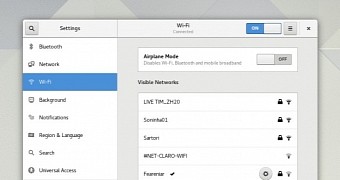GNOME developer Georges Stavracas is teasing us again with the beautiful new design of the GNOME Control Center application that could be soon implemented in the popular desktop environment for GNU/Linux distributions.
Now that Ubuntu is switching back to the GNOME desktop by default with the upcoming Ubuntu 17.10 (Artful Aardvark) release, due on October 19, 2017, GNOME gets a lot of attention lately from both the Linux and GNOME communities. And it looks like the revamped Control Center is a hot topic these days.
Now that Ubuntu is switching back to the GNOME desktop by default with the upcoming Ubuntu 17.10 (Artful Aardvark) release, due on October 19, 2017, GNOME gets a lot of attention lately from both the Linux and GNOME communities. And it looks like the revamped Control Center is a hot topic these days.
Back in January, we reported on the many improvements that are coming to Control Center's Network, Online Accounts, Region & Language, and Printers panel, and now Georges Stavracas managed to add the new Wi-Fi panel, which looks beautiful, it better handles multiple Wi-Fi adapters, and it's a lot easier to use.
"With the new Wi-Fi panel, we’re close to making the new Settings shell the default one; the biggest blocker now is the Network panel, which I’m already working on," said Georges Stavracas in his latest blog post. "And finally, after more than a year working on the new Settings layout, we’re almost there."
Could be implemented in GNOME 3.26
The connection editor dialog was also redesigned to be much simpler and saner, if you look at the attached screenshot or the video at the end of the article. But this is just the beginning, as the developer wants to add more improvements, such as to make the Wi-Fi panel invisible when there's no Wi-Fi adapter present on the PC.
That being said, we can only hope to see the revamped GNOME Control Center in the upcoming GNOME 3.26 desktop environment, due for release on September 13, 2017. Until then, you can try it out by compiling the latest development snapshots from the project's Git repository. Don't forget to report bugs, too!

 14 DAY TRIAL //
14 DAY TRIAL // 